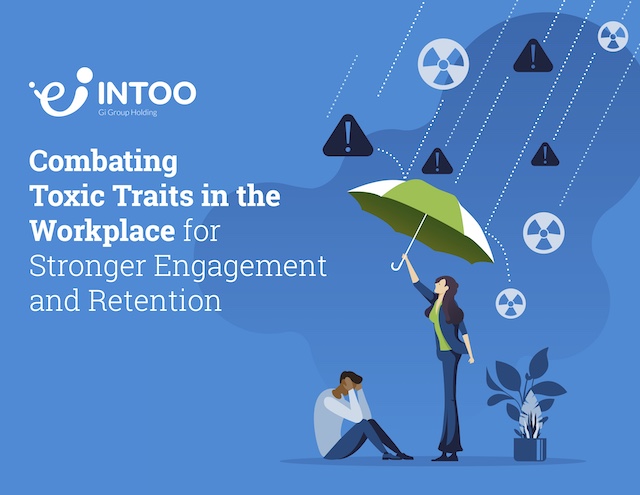When a company conducts a layoff, a lot of attention is given to the employees who are leaving the company. They are, after all, the ones who have lost their jobs. From looking for a new source of income to managing a myriad of emotions, employees who are laid off have many sudden life and work adjustments to make—which is why HR professionals make an effort to smooth the offboarding process by planning compassionate layoff meetings and preparing severance packages.
However, retained employees also have to adjust to many changes, which is why it’s vital for HR professionals to consider how to motivate employees after layoffs. These employees also often experience a myriad of deep emotions, from sadness at a coworker’s departure to fear they may be let go next. In addition, employees usually see their work duties shift, change, or grow. They may need to take on bigger workloads, learn to perform new tasks, or change offices to start working with new people in the case of a merger or acquisition. Even for the employees who welcome the changes, the adjustment period can be challenging. During this time of redesign, HR leaders find themselves asking how to motivate employees after layoffs.
If this period of transition is mishandled, your company can face a number of negative consequences. Retained employees who feel devalued or unheard may let their frustrations out publicly, which can hurt your employer brand. Andrew Chamberlain, chief economist at Glassdoor, explained to Employee Benefit News the employee problems posed by layoffs: “They’re demoralizing, and that’s going to show up on Glassdoor reviews and social media. It’ll hurt your chances of recruiting the best talent when you start hiring again.”
In addition, if your remaining employees are preoccupied with negative emotions about the layoff, their productivity will suffer. Some may even follow in the footsteps of the laid-off employees and choose to leave the company, especially if they believe more layoffs are coming, or feel their new work conditions are untenable. And as SHRM points out, one employee leaving a company can trigger more departures—a phenomenon known as turnover contagion. This kind of talent departure can add on an additional challenge during an already-delicate time of transition.
If you’re an HR professional concerned about how to motivate employees after layoffs, here are some concrete actions you can take to engage and support the members of your workforce.
Communicate honestly
It’s important to let your retained employees in on the details of your organization’s layoff as early as possible. SHRM recommends holding a group meeting that clearly communicates to remaining employees some basic facts. Share who and how many people were let go, and detail what efforts your company made to support these exiting employees. For example, you might mention that each departing employee was given severance pay and outplacement services to help them find a new position quickly. Knowing that their former colleagues are being treated with compassion and empathy as they depart will help reassure remaining employees that your company cares about its people.
You’ll also want to explain why your company had to conduct layoffs. Inform your employees of the business reasons that necessitated a reduction in force, and explain what the workforce changes are expected to achieve for the company. Sharing these details can get employees excited about the future of the company, and help you address the question of how to motivate employees after layoffs.
Your remaining employees will naturally want to know if additional layoffs are planned. Be honest about your company’s current situation. If the outlook is uncertain, communicate that fact without sugarcoating it, as the truth will likely be better than the worst of your employees’ fears. If there are no further layoffs planned, reassure your employees of this fact to assuage unnecessary fears.
After sharing information, allow employees time to ask questions. Give truthful and transparent answers, as that will help your company regain its employees’ trust.
Acknowledge emotions
Because layoffs make for an emotionally tumultuous time, it’s important to take steps to recognize the feelings of your remaining workers. Retained employees may feel sad about losing colleagues, angry about company decisions, and fearful of future layoffs. They may even feel survivor’s guilt at having kept their jobs while others lost theirs.
Employees could also have negative emotions about the ways their work duties have changed. They might feel overwhelmed by or disgruntled about additional work that has been put on their plate.
To support employees during this difficult time, show genuine concern. According to Fast Company, the first step to allow people to share their thoughts and feelings is to demonstrate that emotions are acceptable at the workplace. Leaders should show this by example: “They can share their feelings when speaking by expressing their joys and fears. In writing, they can sprinkle their message with emotional words to show they have feelings like the rest of us. This will bring leaders closer to their staff and go a long way towards establishing trust.”
By allowing employees to express their emotions, you’ll encourage a healthier workplace during the difficult transition time after a layoff and beyond.
Rebuild trust
When considering how to motivate employees after layoffs, HR professionals should place a high emphasis on rebuilding the trust of employees in the company. This is because layoffs usually make employees question the company’s longer-term commitment to them—and their commitment to the company. As Forbes points out, after a layoff, “there is a high likelihood that productivity, morale and commitment will decrease as a result of anxiety, instability and a perceived breach of trust. While implementing plans for the employees who will be leaving, don’t forget to rebuild trust and develop morale with those who remain.”
To begin rebuilding trust, first acknowledge that there’s a lack of trust, says Henna Inam, CEO of Transformational Leadership, in Forbes. “Acknowledging the reality that no one talks about is an enormous relief and sets the tone for transparency,” Henna says. Once the issue is out in the open, you can begin taking action, from communicating your intent to reestablish trust to listening to your workforce and setting common goals.
Show you value remaining employees
Although employees that remain after a layoff are clearly retained because the company sees value in their work, retained workers often feel unimportant in the eyes of the company in the aftermath of a layoff. After all, they just saw their coworkers dismissed from the organization. After seeing the exodus, remaining employees may feel similarly disposable.
For this reason, companies must take steps to make employees feel valued after a layoff. Let them know how vital they are to reaching your company’s business goals, post-layoff. Highlight what you expect the company changes will do. The idea is to get buy-in from all your employees on these larger aims to cultivate a culture where all members of the company feel they’re working toward a common goal.
To this end, you might consider holding one-on-one conversations with each employee to open the communication lines and learn about their individual workplace concerns to try to address them. This is an important ongoing management practice. As Inc. notes, “one of the best ways to show your employees you appreciate them is making the time to connect with them. Find out how they’re doing—including their lives outside work.”
Your company might also consider perks to improve morale and reduce office tensions, such as offering retained employees a paid day off to unwind from the emotions brought up by the layoff, or providing a catered meal during the often-busy time post-layoff.
Last but not least, thank your workers. Just as an employer chooses who goes and who remains in the case of a layoff, the retained employee can choose whether to stay with your company or go to another. Show gratitude for the decision they’ve made to remain through these difficult times, and for the work they’ll do to get the company through.
Prevent overburdening the survivor
Often, after a layoff, remaining employees are asked to take on more work. A job that used to be done by three people may now be done just by one. This consolidation of duties can put a lot of pressure on the retained employees. In addition, remaining employees may also need to acquire new skills and knowledge if their jobs have expanded to include additional duties. If your company doesn’t provide adequate support to nurture this learning, the circumstances can lead to overwhelm, especially during an emotionally difficult time.
In such cases, it’s helpful to work with the retained employees to set reasonable expectations. The first step is to get a clear picture of the workload on each employee’s plate. If the spread is uneven, you may need to shift tasks to even things out.
It may be that everything that used to get done at your company prior to layoffs can no longer be completed by the reduced workforce. If this is the case, help your employees prioritize. Be clear about the needs that are crucial, and identify the duties that can be delayed or eliminated. Offer career development as needed—including the time needed for that growth.
__
Many of these tips on how to motivate employees after layoffs are really best practices that companies should prioritize at all times. After all, communicating honestly, acknowledging emotions, and showing general concern for your employees should not be practices reserved only for after a layoff has taken place. If your company culture already lacks trust and honesty, it’ll be extremely difficult to build those things after a major event like a layoff.
In fact, one key point on how to motivate employees after layoffs, is by genuinely supporting and caring for your employees during a layoff. The way exiting employees are treated is how remaining workers will determine how much your company cares about the people it employs. Are the laid-off workers treated with empathy and dignity? Are they given a chance to get their questions answered? Are they given fair severance packages—including outplacement services?
Outplacement services, a benefit given by a company to help exiting employees find new jobs, can act as an important morale booster, both for exiting and retained employees. For laid-off workers, outplacement offers much-needed career transition support, allowing them to focus on future job prospects instead of dwelling on the loss of the previous job. Retained workers see that their company is a caring one that supports even former employees with their career paths.
Intoo’s outplacement solution provides employees in transition with key services, such as on-demand, one-on-one coaching with premier career development professionals, resume reviews, and much more. Request a demo to see how Intoo can help your company address concerns about how to motivate employees after layoffs.











